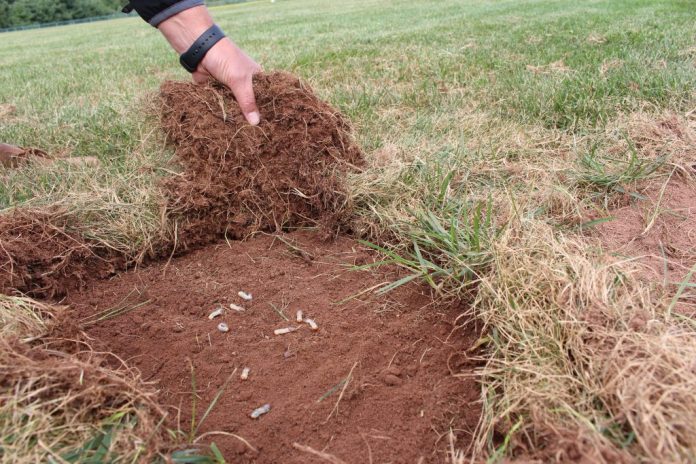If you have ever dealt with lawn grub damage, then you know how frustrating it can be. Not only does your beautiful lawn turn into a brown, patchy mess, but the pests can also do a lot of damage to your plants and trees. This blog post will explore how to prevent the damage caused by these pesky critters and get your lawn looking healthy again!
For more information on the importance of grub control, be sure to check out this guide from RDS Lawn Care in North Carolina.
Table of Contents
How To Spot A Grub Problem
The first step in repairing grub damage is to determine whether or not you have a problem. Grubs are small, white larvae that feast on the roots of your grass. If you notice brown patches in your lawn that seem to be dying, this is a sure sign of grub damage. Another telltale sign is if you see animals digging around in these areas; they are likely looking for a tasty meal!
Spongy turf and detached roots are also very common signs of a grub infestation. Lawn grubs eat away at the roots of your lawn under the soil surface. This causes patches of your lawn to feel soft under your feet, and severely damaged turf will peel back in your hand with little resistance.
Methods Of Grub Control
Once you have identified that you have a grub problem, it is important to take action immediately. If left untreated, grubs can cause extensive damage to your lawn and plants. The good news is, there are many effective methods of control!
-
One popular method is called milky spore treatment. This organic method uses bacteria to kill the larvae of Japanese beetles, a common type of grub. The bacteria infects and kills the beetle larvae as they feed on your grassroots. Over time, this treatment will reduce the population of grubs in your lawn significantly!
-
Chemical treatments are another option for those looking to get rid of their grub problem quickly. These products work by killing the larvae as they feed on your grass. There are many different products to choose from, so be sure to ask your local nursery or lawn care professional for a recommendation.
-
Soap and water are simple yet effective ways to get rid of grubs. This method works by suffocating the larvae. Simply mix one cup of dish soap with two gallons of water and pour it over the affected area. Be sure to do this in the early morning or evening so that the hot sun doesn’t evaporate the mixture too quickly! You will see grubs rise up to the surface of the soil in just a short amount of time.
Common Causes Of A Grub Infestation
There are many different factors that can contribute to a grub infestation. One common cause is overwatering your lawn. While your grass does need water to survive, too much water can actually be harmful. Wet conditions are ideal for grubs, as they allow them to thrive and lay their eggs in your soil. Be sure to water your lawn only when necessary, and never more than once a day.
Another common cause of grub damage is thatch build-up. Thatch is a layer of dead grass, roots, and other organic matter that accumulates on your lawn over time. This layer can be very dense, and it provides the perfect hiding spot for grubs to avoid detection.
Thatch also prevents water, air, and nutrients from reaching your grassroots, which can lead to serious problems down the road. Be sure to have your lawn professionally de-thatched every few years to prevent grub damage.
Professional Lawn Care Can Help!
Grubs are a pesky problem that no gardener or homeowner wants to deal with. If you are concerned that you are not knowledgeable enough to identify or treat lawn grub damage, you should not hesitate to call the pros!
Many professional lawn care providers offer some form of grub control, even if it is just an add-on service to their fertilization program because they know how important grub control is to the health of your lawn. For the best results and the greenest grass, call a local lawn care provider for the most effective grub control service.


















